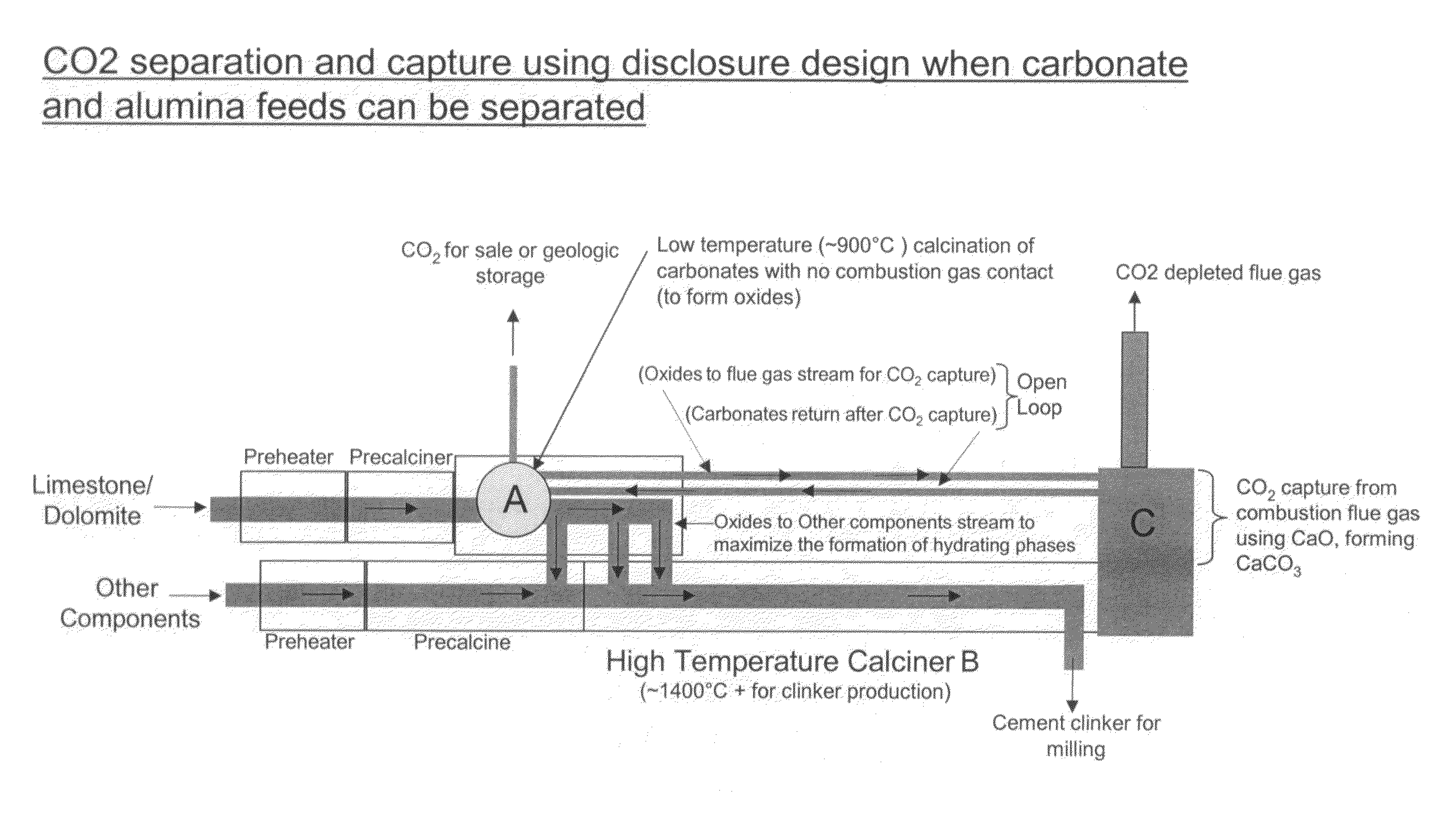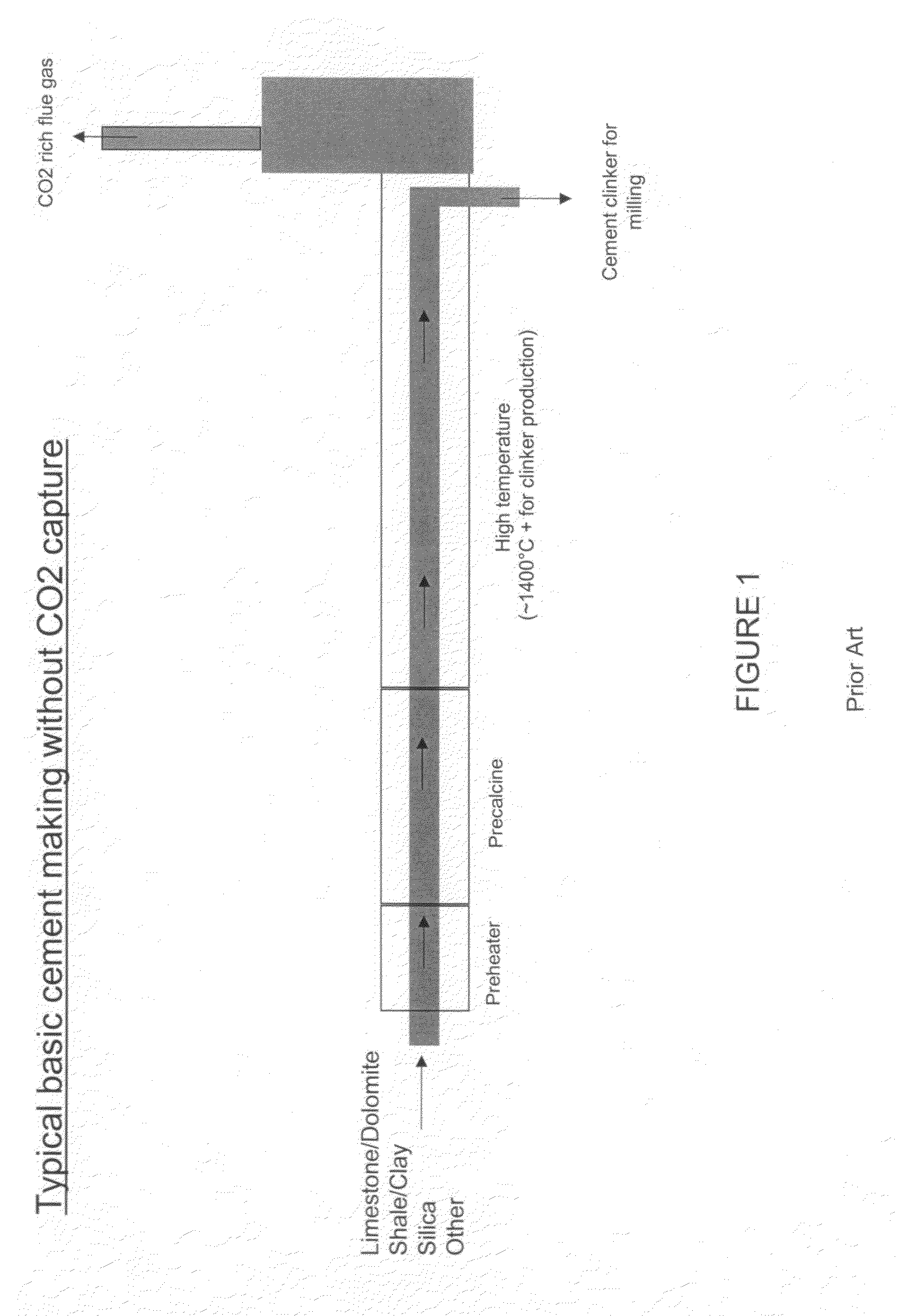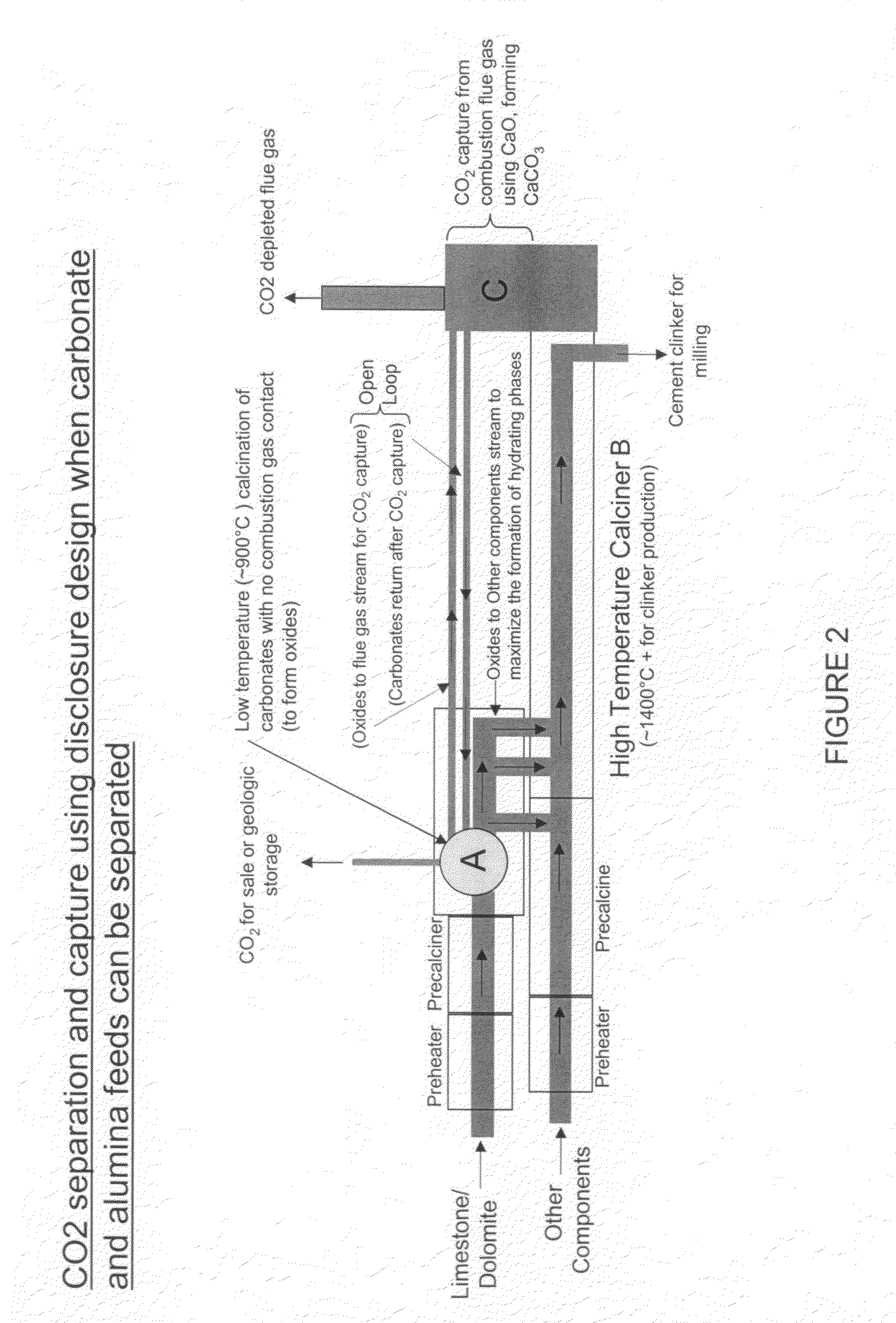Carbon dioxide capture from a cement manufacturing process
a technology of carbon dioxide and cement manufacturing, which is applied in cement production, mechanical equipment, machines/engines, etc., can solve the problems that fuel costs are a significant factor in the final cost of the product, and achieve the effects of reducing the presence of non-hydrating phases, and reducing the number of hydration phases
- Summary
- Abstract
- Description
- Claims
- Application Information
AI Technical Summary
Benefits of technology
Problems solved by technology
Method used
Image
Examples
example 1
As seen in reference to FIG. 2, limestone / dolomite may be segregated from other components of clinker manufacturing and fed into a pre-heater and a precalciner segment during which time the limestone / dolomite undergoes drying and preheating to approximately 600° C. Thereafter, the heated limestone / dolomite is fed into the calciner (A) which raises the temperature of the feed to approximately 1050° C. for discharge to the remaining portion of the cement making process. Between 600° C. and 1050° C. the majority of the limestone / dolomite (CaCO3 / CaMg(CO3)2) decomposes to CaO / MgO with a release of CO2, which is captured and removed from calciner (A) prior to discharge to the high temperature calciner (B). As illustrated in FIG. 2, a fraction of the CaO / MgO maybe conveyed in an open loop manner to a separate location for interaction with combustion flue gas forming CaCO3 / CaMgCO3 at location (C) which is then returned to the calciner (A) for subsequent stripping of CO2. From the calciner (...
example 2
As seen in reference to FIG. 3, a process may be provided in which the clinker constituents cannot be easily separated into a separate limestone / dolomite phase. In this scenario, the pre-heater and pre-calciner are operated at temperatures similar to those described in reference to Example 1. The calciner (A) provides for no combustion gas contact with the material feed such that the CO2 evolved in the calciner is of a sufficiently clean form that it may be captured for sale and / or geologic storage. A portion of the CaO / MgO which is produced in calciner (A) is used to scrub the combustion flue gas at location (C) from the clinker production so as to remove CO2 from the flue gas, thereby forming CaCO3 / CaMg(CO3)2. The CaCO3 / CaMg(CO3)2 feed is thereafter introduced into the calciner (A) resulting in the release of a clean supply of CO2 in an open loop process. As the feed materials move through calciner (A), they are removed at the end of the calciner unit and subjected to a higher tem...
PUM
| Property | Measurement | Unit |
|---|---|---|
| temperature | aaaaa | aaaaa |
| temperature | aaaaa | aaaaa |
| temperature | aaaaa | aaaaa |
Abstract
Description
Claims
Application Information
 Login to View More
Login to View More - R&D
- Intellectual Property
- Life Sciences
- Materials
- Tech Scout
- Unparalleled Data Quality
- Higher Quality Content
- 60% Fewer Hallucinations
Browse by: Latest US Patents, China's latest patents, Technical Efficacy Thesaurus, Application Domain, Technology Topic, Popular Technical Reports.
© 2025 PatSnap. All rights reserved.Legal|Privacy policy|Modern Slavery Act Transparency Statement|Sitemap|About US| Contact US: help@patsnap.com



